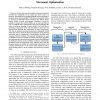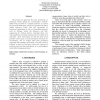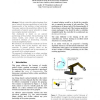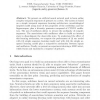1019 search results - page 6 / 204 » Managing Complexity in Large Learning Robotic Systems |
ICRA
2009
IEEE
14 years 2 months ago
2009
IEEE
— Recent advances in the field of humanoid robotics increase the complexity of the tasks that such robots can perform. This makes it increasingly difficult and inconvenient to ...
ICRA
2003
IEEE
14 years 27 days ago
2003
IEEE
We present an approach that uses Q-learning on individual robotic agents, for coordinating a missiontasked team of robots in a complex scenario. To reduce the size of the state sp...
ICRA
1998
IEEE
13 years 12 months ago
1998
IEEE
This paper discusses how a robot can develop its state vector according to the complexity of the interactions with its environment. A method for controlling the complexity is prop...
KES
1998
Springer
13 years 11 months ago
1998
Springer
Robotic controllers take advantage from neural network learning capabilities as long as the dimensionality of the problem is kept moderate. This paper explores the possibilities of...
ICANN
2007
Springer
13 years 11 months ago
2007
Springer
We present an artificial neural network used to learn online complex temporal sequences of gestures to a robot. The system is based on a simple temporal sequences learning architec...




